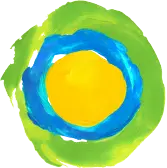ONG (Setor Social)
The Sanctuary for Second Chances, Inc.
Missão
The Sanctuary for Second Chances, Inc. exists to walk with individuals seeking freedom from chemical dependency, co-dependency, and destructive behavioral patterns rooted in dysfunction and compulsion. As a Non-Therapeutic Community (Non-TC), we offer a structured transitional housing and renewal program grounded in spiritual reflection, supportive fellowship, and principles inspired by the Twelve Steps. We create a sanctuary where lives are renewed, hope is restored, and dignity is honored—apart from clinical or medical interventions.
The Sanctuary for Second Chances, Inc. exists to walk with individuals seeking freedom from chemical dependency, co-dependency, and destructive behavioral patterns rooted in dysfunction and compulsion. As a Non-Therapeutic Community (Non-TC), we offer a structured transitional housing and renewal program grounded in spiritual reflection, supportive fellowship, and principles inspired by the Twelve Steps. We create a sanctuary where lives are renewed, hope is restored, and dignity is honored—apart from clinical or medical interventions.
Sobre Nós
The Sanctuary for Second Chances, Inc. affirms that it operates a structured, non-medical, non-psychiatric, and non-clinical transitional housing, and recovery support program. While the initial service focus of its residency program is women, its Life Recovery Program is intentionally designed to serve both men and women in recovery through residential, individual recovery coaching, community-based implementation or partnership-based outreach.
The Life Recovery Program follows a values-based, trauma-informed, evidence-informed and person-centered approach that emphasizes life skills development, moral formation, reflective practice, and peer support. It does not provide medical treatment, psychiatric care, or therapeutic intervention.
As a core part of its psychoeducational framework, the Life Recovery Program includes a required, non-clinical presentation of the Disease Concept of Addiction. This framework is not introduced as a medical diagnosis, but as a transformational lens to help participants better understand their struggles with substance use, codependency, or other compulsive behaviors. Its inclusion is intended to:
- Reduce shame and stigma by presenting addiction as a condition with behavioral, emotional, and spiritual dimensions—not merely a moral failing;
- Encourage self-awareness and accountability, without applying medical labels or clinical classifications;
- Provide a bridge to community-based recovery groups (such as AA, NA, Al-Anon), where the disease model is commonly referenced, and offer language that supports peer connection and mutual support.
The Disease Concept of Addiction is intentionally presented in accessible, non-medical language, and is not used as a clinical or diagnostic tool, but as an essential recovery tool for understanding the chronic, progressive, and multi-dimensional nature of addiction. Participants are expected to actively engage with this framework as part of their recovery journey. Its inclusion to support a paradigm shift – from viewing addiction as a moral failing to understanding it as a chronic, progressive condition with behavioral, emotional and spiritual dimensions. This shift is essential to reducing internalized shame, promoting accountability, and fostering openness to sustained recovery.
The program does not conduct medical or psychological assessments, does not employ licensed clinicians for treatment, and does not offer services requiring Department of Health (DOH) licensing or therapeutic certification. Instead, it provides a spiritually integrated, community-based recovery environment that supports men and women seeking to rebuild their lives with dignity and purpose. While not required to operate under DOH regulation, The Sanctuary for Second Chances, Inc. intentionally integrates the qualified oversight of a DOH-Accredited Rehabilitation Practitioner as its Program Director. This reflects its commitment to ethical alignment with national recovery standards, while firmly maintaining its non-medical, non-psychiatric identity as a values-based, peer-supported, and trauma-informed, and evidence-informed recovery program.
In alignment with its holistic, values-based model, the program integrates optional spiritual anchors drawn from diverse and time-tested sources, including:
- The Bible
- The Rule of St. Benedict
- The 12 Steps and 12 Traditions
These spiritual anchors provide language and imagery for reflection on universal human experiences such as surrender, growth, humility, forgiveness, and hope. They are never imposed nor presented as religious instruction. Participants are encouraged to engage with these sources freely—or to draw from their own spiritual or moral traditions—depending on what best supports their personal recovery journey.
Facilitators and Recovery Coaches are trained to present both the Disease Concept of Addiction and spiritual anchors with emotional sensitivity, cultural respect, and openness to diverse belief systems. Recovery Coaches serve as trained companions, not clinicians—offering presence, accountability, and encouragement through regular, confidential conversations tailored to each individual’s journey.
The Life Recovery Program of The Sanctuary for Second Chances, Inc. maintains full alignment with the standards for non-medical, non-psychiatric, and non-clinical transitional housing and community-based recovery support programs as outlined by the Department of Social Welfare and Development (DSWD). The program responsibly integrates the Disease Concept of Addiction and optional spiritual anchors as educational and reflective tools, not as clinical or therapeutic interventions.
The Sanctuary for Second Chances, Inc. affirms that it operates a structured, non-medical, non-psychiatric, and non-clinical transitional housing, and recovery support program. While the initial service focus of its residency program is women, its Life Recovery Program is intentionally designed to serve both men and women in recovery through residential, individual recovery coaching, community-based implementation or partnership-based outreach.
The Life Recovery Program follows a values-based, trauma-informed, evidence-informed and person-centered approach that emphasizes life skills development, moral formation, reflective practice, and peer support. It does not provide medical treatment, psychiatric care, or therapeutic intervention.
As a core part of its psychoeducational framework, the Life Recovery Program includes a required, non-clinical presentation of the Disease Concept of Addiction. This framework is not introduced as a…
Causas incluem:
- Desenvolvimento Comunitário
- Dependência Química & Uso de Substâncias
- Mulheres
Localização & Contato
- +639602336216
- admin@sanctuaryforsecondchances.org
- Muntinlupa, Metro Manila, Philippines


